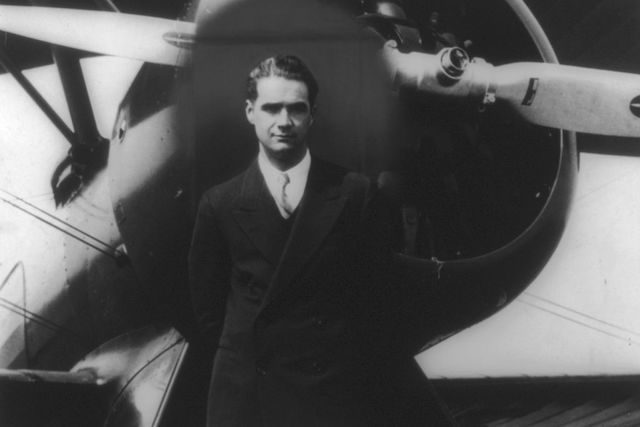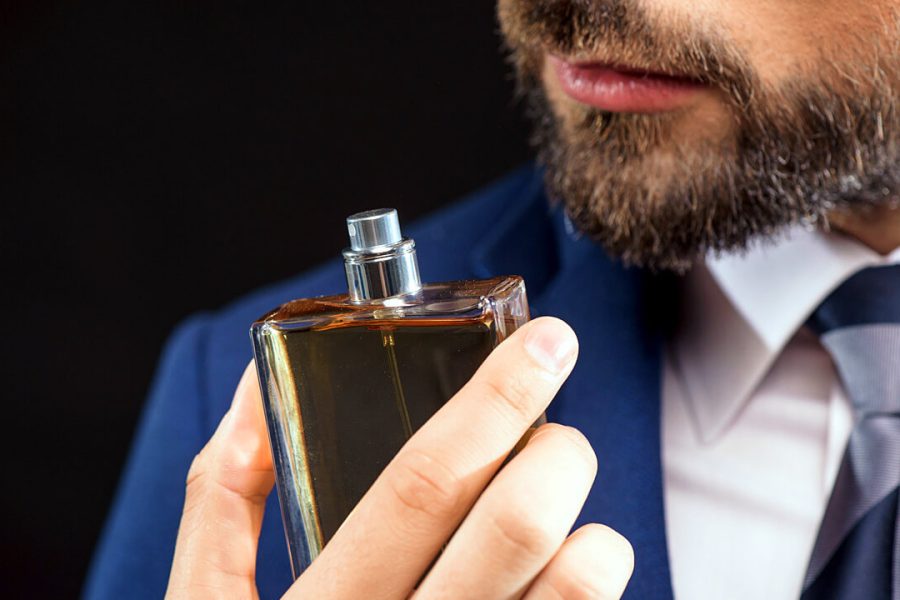Judging by the appearance, Howard Hughes lived a charmed life. Rich. Handsome. Successful. As the saying goes, men wanted to be him and women wanted to be with him. But beneath the surface, a much darker and stranger picture emerged.
Here's a look at one of the most famous, yet least understood, public figures of the 20th century.
10. Secret codes

Hughes used a complex system for communication with his staff and inner circle. The categories were designated as "Secret," "Confidential," or "Restricted." He also assigned code names to key personnel and nicknamed himself "The Shareholder" and called actress Yvonne Schubert, one of his many girlfriends, "The Party."
Whether negotiating complex business deals or lamenting conspiracy theories, the notoriously paranoid multi-hyphenate wrote long, rambling memoranda in legal pads for his employees to decipher. The six-page directive laid out rules for male employees: "Don't befriend people outside the office. Don't engage in long, unnecessary conversations with secretaries. Make sure all confidential and secret materials in wastebaskets are properly destroyed and burned. Say as little as possible to your wife."
9. Full-size fetish

Typically, stories about Billy the Kid revolve around gunfights and cattle rustling. But Hughes's version of The Outlaw, which he directed and produced, focused on a different pair of themes: Jane Russell's breasts. He even designed a bra for her, a bulky wire contraption that she later called "ridiculous."
His obsession with female anatomy extended to his harem of busty Hollywood starlets. Hughes even instructed his drivers not to exceed two miles per hour on rough roads because he believed that any sudden movements could damage their valuable property.
8. War on Germs

While life in the current Covid era has created a germaphobic society, Hughes raised the precautions to a new level. His staff were given a manual with very detailed instructions on how his food should be prepared before being served.
One of Hughes' strangest memos dealt with a nine-step process for sanitizing and washing canned peaches. Step #3, "Washing the Jar," stated, "...first soak and remove the label, then scrub the cylindrical portion of the can over and over until all dust particles, bits of paper label, and all sources of contamination have been eliminated."
The industrialist also used a huge amount Kleenex napkins , to protect himself from the supposed bombardment of germs, and repurposed the boxes into shoes. His refusal to trim his toenails only made the cardboard shoes even more unsuitable.
7. Mormon Mafia

Hughes preferred to hire Mormons for his business ventures because he believed that their parochial lifestyle, which prohibited drinking, smoking, and gambling, made them more reliable. One of his top executives, Frank “Bill” Gay, hired other members of The Church of Jesus Christ of Latter-day Saints (LDS) — a cadre that became known as the “Mormon Mafia.” . Their ranks expanded significantly when Hughes began buying up Las Vegas in the late 1960s.
This exclusive hiring practice also led to the infamous "Mormon Testament" which tried to extort millions from the eccentric billionaire. Among those listed as beneficiaries was a gas station owner named Melvin Dummar, who claimed to have once rescued Hughes in the Nevada desert. Shortly after Hughes' death in 1976, Dummar said he "mysteriously" received an envelope containing the will, which he then took to the LDS Church office in Salt Lake City.
Unsurprisingly, a Nevada court later ruled the document a forgery. But the story doesn't end there. Hardly. In 1980, the novel Stranger Than Fiction was adapted into a film, Melvin & Howard, starring Paul Le Mat and Jason Robards.
6. I scream, you scream

To fuel his night owl lifestyle, Hughes ate copious amounts of ice cream, including his favorite flavor, Baskin-Robbins banana nut. But when the company discontinued the product , Hughes threw a tantrum, as you might expect from a five-year-old or an adult unaccustomed to hearing the word "no."
The popular network has agreed to produce private party — but only if Hughes bought enough to feed a small army. The crisis eased. But once the goods arrived at Hughes's Desert Inn in Las Vegas, the fickle boss decided he wanted French vanilla instead. As a result, it took the hotel-casino several years to use up its surplus of rejected desserts.
5. Grounded goose
November 2, 1947 built and flown by Hughes "Spruce Goose" made its first and only flight in Long Beach, California. The colossal wooden floatplane (officially designated the "H-4") had a wingspan longer than a football field and was designed to transport troops and equipment across the Atlantic during World War II. But in the end, long delays and questionable working condition airplane made the giant bird of little value.
Nevertheless, Hughes kept the aircraft airworthy and housed it in a highly secure, purpose-built, climate-controlled facility for the rest of its life, costing $1 million a year. Some historians speculate that Hughes grounded the H-4 permanently to prevent any design flaws from being discovered. The behemoth can now be seen in Evergreen Air and Space Museum in McMinnville, Oregon.
4. Limited menu

The super-rich are known for spending lavishly on expensive wines and enjoying the most exquisite gourmet cuisine. Not Hughes. The lanky Texan never ate and often ate the same dinner every night : steak (medium rare), salad, and exactly a dozen peas, which he arranged by size, a ritual that stemmed from his heavy but undisclosed obsessive-compulsive disorder.
Cooking required cleaning the grill so that his meat would not come into contact with any other food debris. Also, the cart used to transport his lunch had to remain outside the kitchen while it was being cooked because he was afraid that it might get contaminated with debris, such as cockroaches or other insects, that got stuck in the wheels.
3. Madness in cinema
Out of habit Hughes often watched the same films over and over again, including Cold War classics "Ice Station "Zebra"" His obsession with film eventually prompted the mogul to buy a television station, allowing him to control the programming schedule day and night.
In 1968, Hughes bought KLAS-TV, the local CBS affiliate in Las Vegas. Popular crooner Paul Anka recalled in his autobiographies , as he could always tell when Hughes was in town. "You'd go back to your room, turn on the TV at 2 a.m., and there'd be a movie on." Ice Station Zebra "," Anka wrote. "At 5am it all started again. It was like that almost every night. Hughes loved that movie."
2. Problems with urine

Hughes didn't bother to get up and go to the bathroom during his TV-watching marathons, which usually found him naked in a darkened room. So instead he peed in jars , and the samples were saved and stored in his cabinet. Unfortunately for his staff, his poor eyesight often meant he missed his target.
Ironically, for a man so preoccupied with germs, Hughes lived in a cesspool of filth and bacteria. In addition to dispersing bodily fluids, he rarely washed or brushed his teeth and refused to clean his room for fear that dust particles would become airborne and be inhaled.
1. Nuclear Wedding

From the glitz of Las Vegas to the alpine splendor of Lake Tahoe, Nevada has long been a popular destination for weddings. Hughes, however, chose a more rural location for his marriage in 1957 to actress Jean Peters , tying the knot in an area that had recently become a nuclear testing ground.
Small village Tonopah is located along U.S. Highway 95, about halfway between Las Vegas and Reno. There, the discovery of precious metals in 1900 led to sudden prosperity before it became a dusty ghost town. The U.S. government later created a highly classified military base limited access near Tonopah for use in experimental aircraft, weapons stockpiles, and a nuclear bombing range.
Despite the unconventional and unromantic wedding, Hughes and Peters managed to stay married for 13 years.















Оставить Комментарий